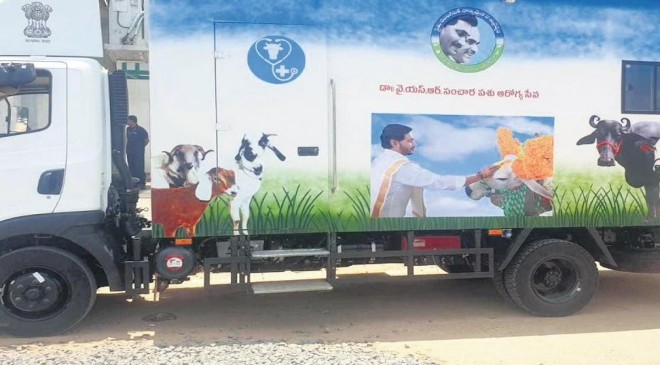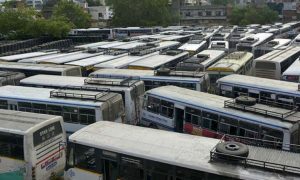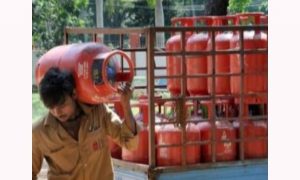Andhra Pradesh Chief Minister YS Jagan Mohan Reddy on Thursday flagged off a fleet of 175 mobile ambulance veterinary clinics (MAVCs) in the first phase at the HCM camp office in Tadepalli. The government has set up MAVCs under the ‘Dr. YSR Sanchaara Pasu Aarogya Seva’ scheme to ensure better accessibility to medical veterinary services at the doorstep.
The Andhra government has spent a total of Rs 143 crore on 175 ambulances under Phase 1 and the remaining 165 vehicles worth Rs 135 crore would be introduced in the second spell. The chief minister flagged off 175 vehicles in the first phase out of a total of 340 ambulances, each for one assembly constituency.
A total of Rs 143 crore has been spent on 175 ambulances, under phase 1. Another 165 Veterinary Ambulances, costing Rs. 135 crore, will be added in the second phase.
The MAVCs are equipped with state-of-the-art facilities to perform tests and diagnoses and the government is spending Rs 278 crore to establish vet clinics across the state.

FACILITIES OF MOBILE VET CLINICS
The ambulances would attend to all emergency services, which also includes artificial insemination services and early veterinary diagnosis. These ambulances will also provide the ‘Hydraulic Lift’ facility to lift animals and shift them to the nearest government veterinary facility in case of an emergency.
A veterinary doctor and a para-veterinary worker will be assigned to every ambulance. In case of an emergency, people can reach out to a toll-free number 1962, for immediate medical assistance.

OTHER MEDICAL FACILITIES
The ambulances also contain a small laboratory equipped with a microscope to perform 20 types of manure tests, 15 types of blood tests, all types of vaccines, medicines and a hydraulic facility to load cattle into the vehicle.
In addition to primary medical services, veterinary ambulances are also designed to perform minor surgery on bovine animals, sheep, goats and pets.
In case of necessity, the animal can be taken to the nearest veterinary area hospital or veterinary polyclinic for proper treatment to save the life of the animal.
After treatment, the animal will be transported back to the livestock farmer’s house at free of cost.





































